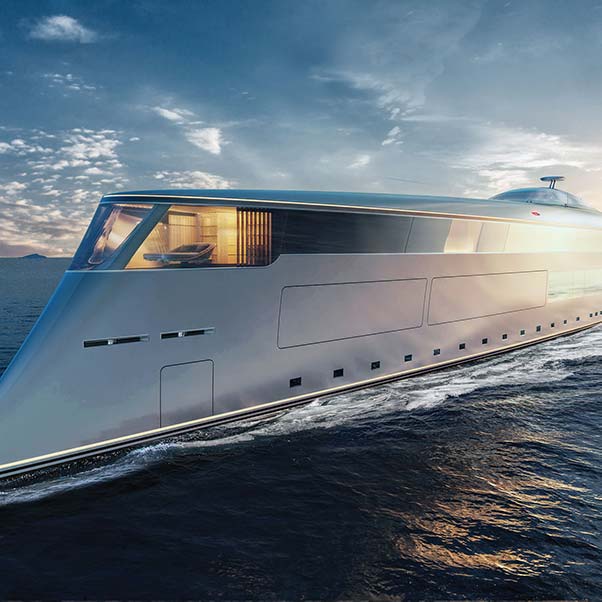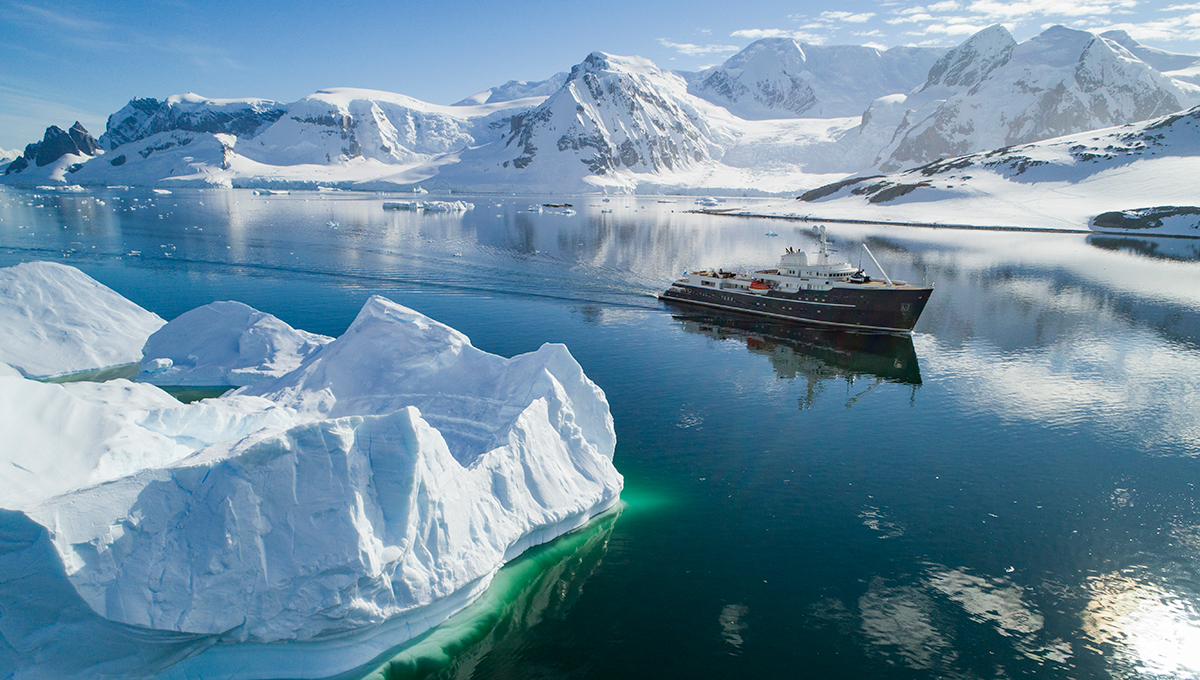
Legend Photo: Justin Hofman & EYOS Expeditions

Legend Photo: Justin Hofman & EYOS Expeditions
Building an explorer
For yachts that are destined for remote expeditions, tailored design features are key.
“The most important consideration when designing an explorer yacht is figuring out exactly where the yacht is going to go.” So says Espen Oeino, and he should know. He’s designing REV, the biggest in-build explorer in the world. A new type of adventure-seeking customer has driven an increased thirst for these sorts of expedition-worthy yachts – and they are getting more and more sophisticated by the year.
Many explorer yachts are destined for the polar regions, where towering icebergs, humpback whales and penguins (depending on which pole you choose) provide an understandable draw. Yachts travelling to these regions have to comply with mandatory standards under the ‘polar code’ – which came into play in 2017. But of course, there’s far more to it than that.
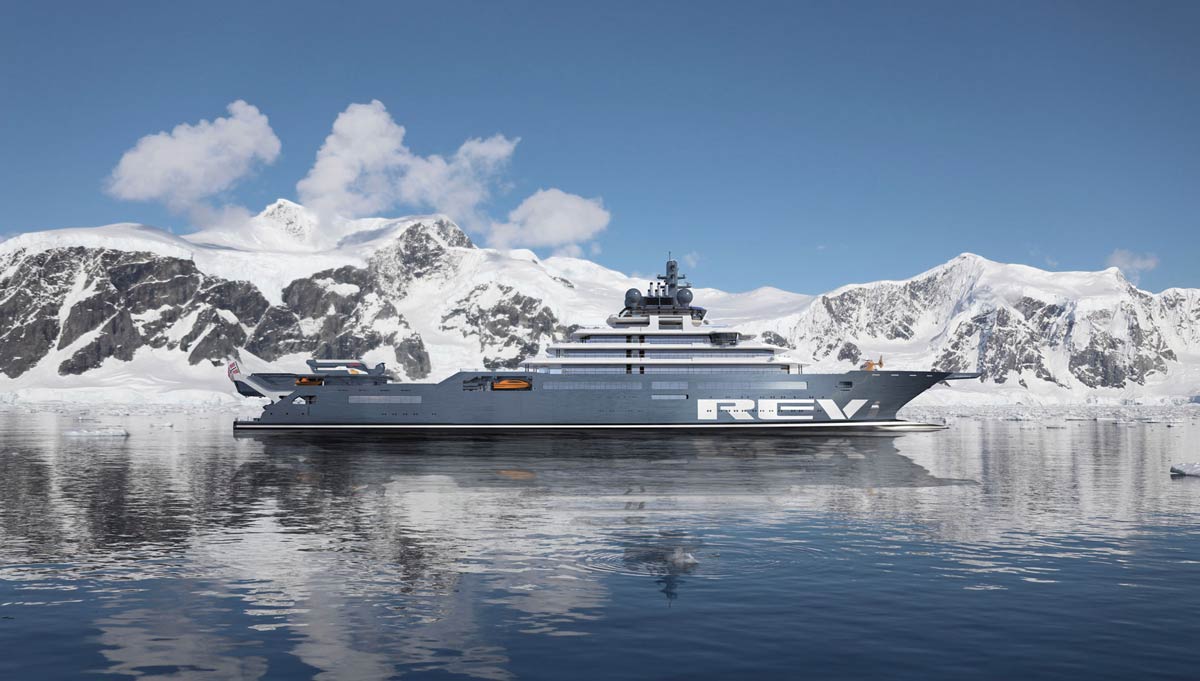
REV

REV
“It’s not just about adhering to the polar code, but also how you design outdoor space and inside spaces,” explains Oeino. “You also need a lot of storage and provisions for living through months of seeing nobody. On REV, for example, we have three months’ autonomy in terms of provisions and fuel.”
Jan Verkerk, the owner of explorer yacht Legend, agrees. Originally built as a hardy commercial vessel, his design team spent over 4000 hours working out how to transform it into a luxury expedition yacht. The refit ended up taking three years, but the results speak for themselves. “The most visible changes are to be found on the aft ship, where a lengthening of the vessel created space for the large swimming platform and a 16-person jacuzzi. Above the aft deck, the mast was removed and a commercially certified helideck was created.”
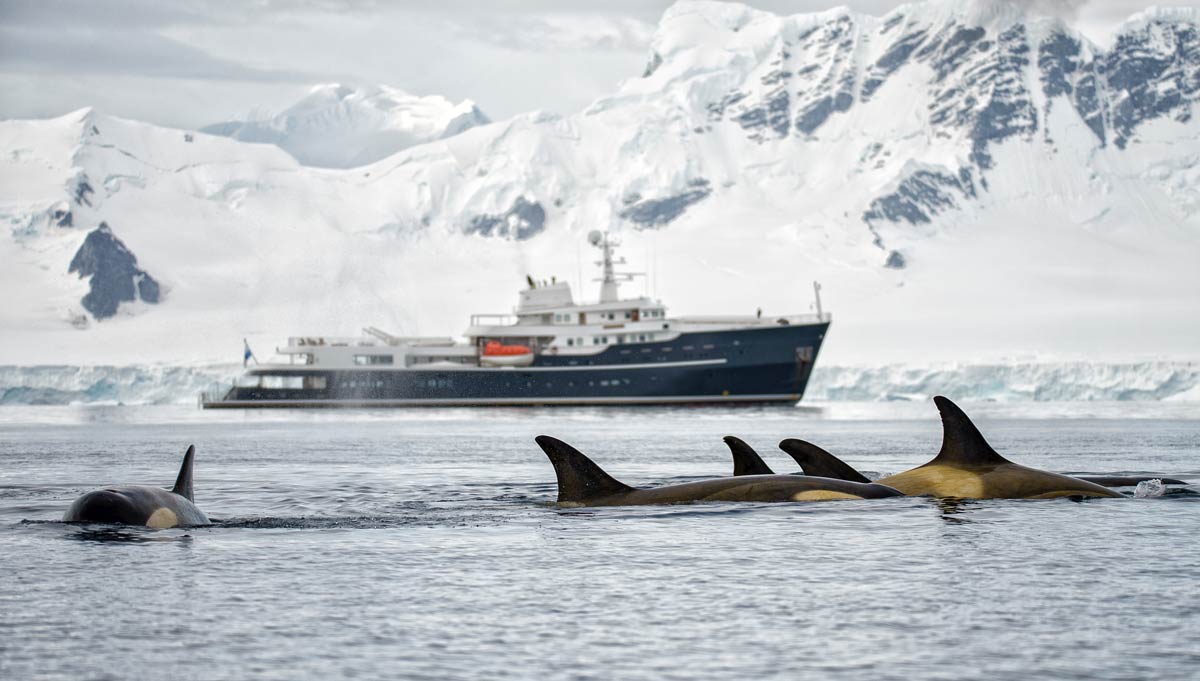
Legend in Antarctica PHOTO: CHRISTOPHER SCHOLEY

Legend in Antarctica PHOTO: CHRISTOPHER SCHOLEY
Many explorer yachts have helipads incorporated onto the boat, and it’s not just to satisfy an owner’s penchant for flight. “You’re on your own in these places, so rescue has to be part of the overall concept,” says Oeino. “Providing your own rescue can involve incorporating things like medical assistance on board and helipads. If you look at REV, there are two helipads so that if one helicopter has a problem, the other can still operate.”
Of course – all of these considerations mean that expedition yachts tend to be bigger than less adventurous yachts. “Also keep in mind that it’s hard to get supplies when sailing in remote destinations,” adds Verkerk. Storage space might not be the most glamorous aspect of expedition ships, but it is of incredible importance to ensure that there are enough freezers and refrigerators as well as lots of room to store spare parts.
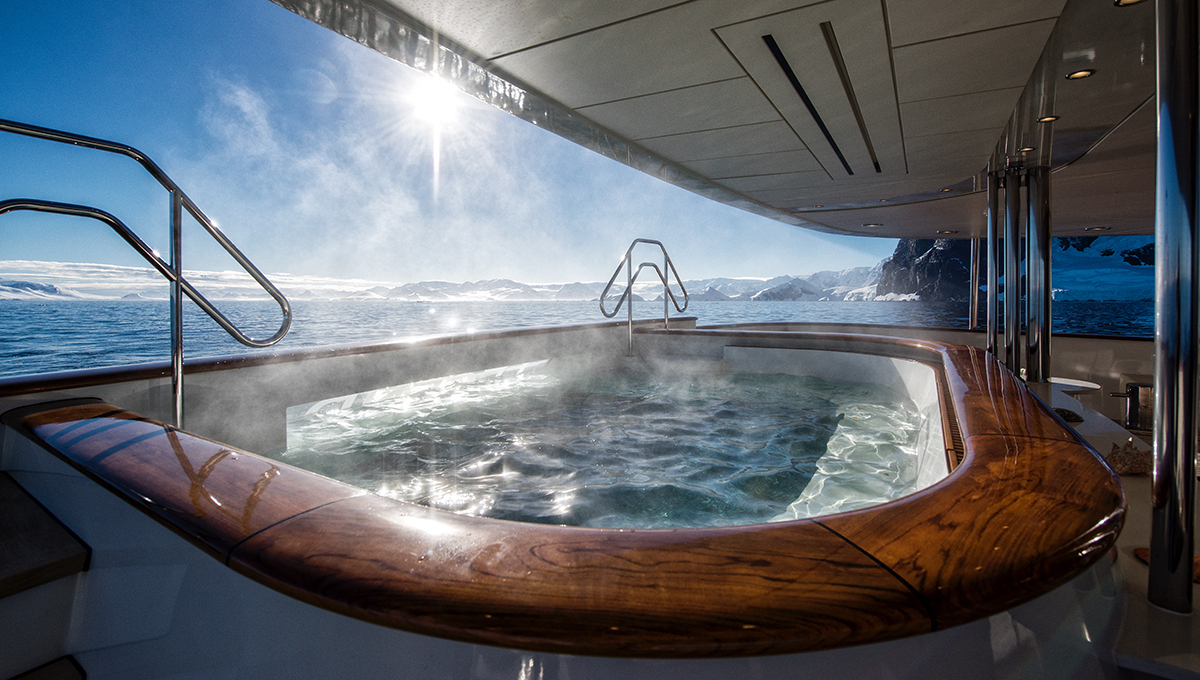
Jacuzzi on boardLegend PHOTO: CHRISTOPHER SCHOLEY

Jacuzzi on boardLegend PHOTO: CHRISTOPHER SCHOLEY
“Also, when you’re living on a boat without going to shore for months at a time, you’ve got to provide better facilities for the crew too – bigger cabins, a gym, and more leisure areas,” adds Oeino. “Cloudbreak even has cabins for mountain guides, helicopter pilots and so on – so there is a new category of cabin that is neither guest nor crew.”
With the guests come a whole new raft of considerations. The bulky clothes and boots required for the polar regions need storage and somewhere to dry out. When guests come back from a kayaking trip between glaciers, getting them out of their kit and back into comfort is paramount. The quicker they can be back in normal clothes, warming up with hot chocolate, the better. And then there are the additional luxuries expected from superyacht life.
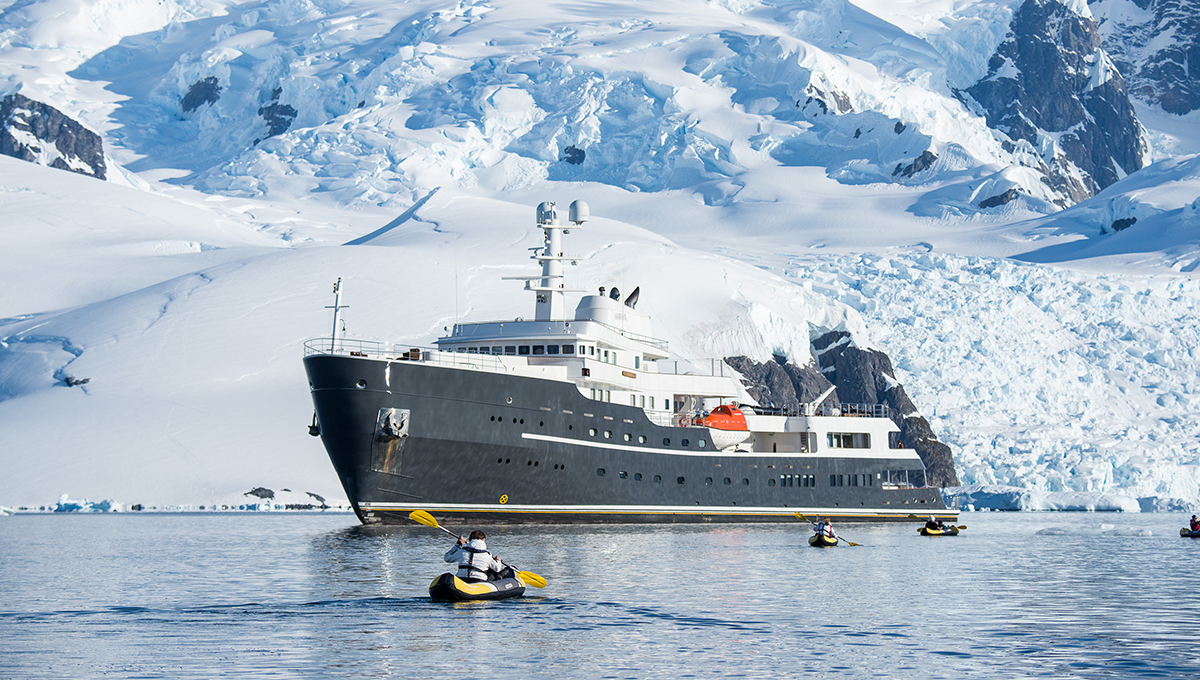
Legend

Legend
“You want your guests to be able to enjoy the spectacular surroundings to the maximum,” says Verkerk. “We made sure the aft-deck had slightly elevated sides with the deck above fully covering the dining-area. Combined with powerful heaters, our guests were able to enjoy outside dinners while being out of the harsh weather conditions and freezing winds.” BBQ in Antarctica, anyone?
Of course, when travelling to the polar regions, a lot more time is spent indoors than might be normal of a yacht – so additions like cinema rooms (where better to watch a film of the day’s adventures?), fully-equipped spas and spacious dining and entertainment areas are not out of the ordinary. Planet Nine features a panoramic observatory room, while Bold from SilverYachts features a winter garden and skylounge, boasting 3.75m high floor-to-ceiling windows.
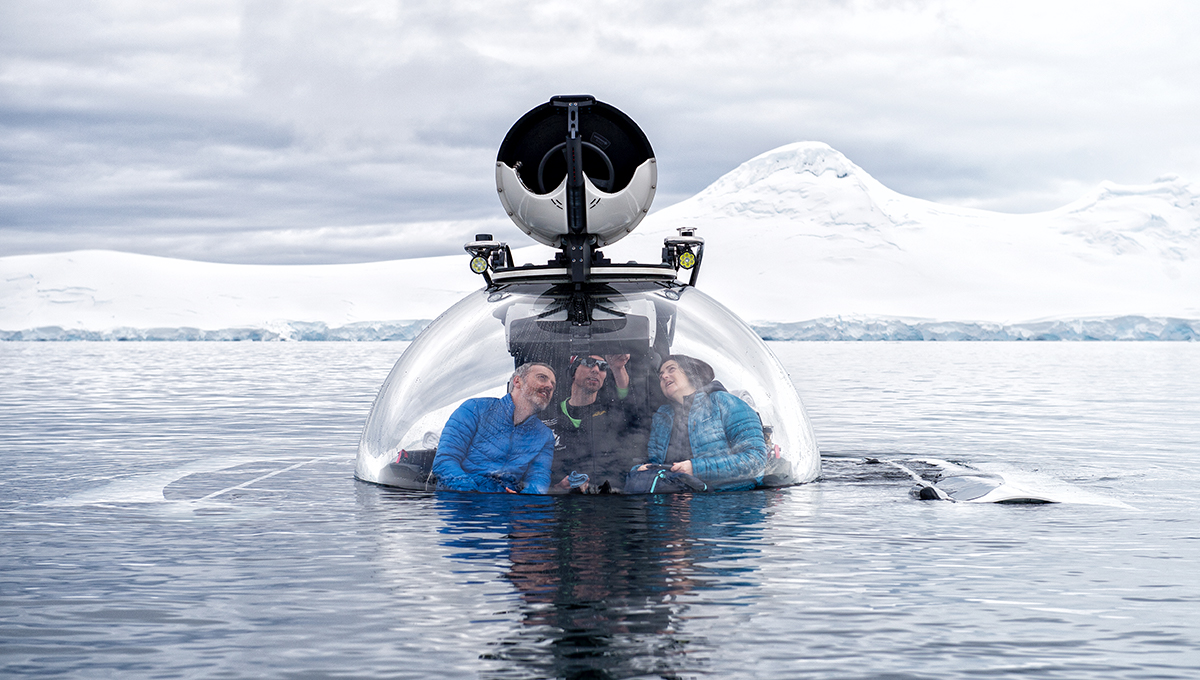
PHOTO: CHRISTOPHER SCHOLEY

PHOTO: CHRISTOPHER SCHOLEY
Many explorers also come with all the requisite toys – including the ultimate toy – a submarine. The one on board Legend is one of Verkerk’s favourite features, while on REV, special ‘moon pools’ have been built into the design to aid their use. “The moon pools are essentially openings in the bottom of the ship which are used to launch and retrieve underwater marine vehicles. It’s easier to launch tenders and subs from within the ship when you are working in sub-zero conditions and high winds, for example.”
It really is the case that every last eventuality is thought of on board these robust vessels – enabling guests to take on these remote regions with peace of mind and in the utmost comfort.



